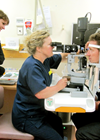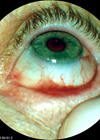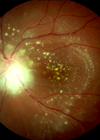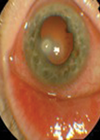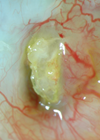Specialty Trainee archive for 2014
External dacryocystorhinostomy in the management of childhood epiphora
Congenital nasolacrimal duct obstruction is thought to be caused by a membranous obstruction at the distal end of the nasolacrimal duct (NLD). Rarely, associated midline deformities in soft tissue and bony structures of the face are present in patients with...
A European ophthalmology perspective
Europe: from the Greek eurus: broad, wide, and ops: eye, face, sight. Thus Europe = the far-sighted (lady). For my first contribution to this column – as the successor of Jonathan Park, whose witty observations and entertaining style many of...
Ocular mucous membrane pemphigoid: the importance of early detection and treatment
Mucous membrane pemphigoid (MMP) is an autoimmune blistering disorder that is characterised by subepithelial bullae. The ocular manifestation of MMP, ocular mucous membrane pemphigoid (OMMP), is a sight-threatening condition characterised by conjunctival cicatricial changes associated with corneal vascularisation and scarring....
Friendly felines and a spot diagnosis
A nine-year-old girl presented to me in eye casualty with a three-week history of blurred vision in her left eye. Otherwise she was apparently well, with no past ophthalmic, medical, drug or relevant family history. Visual acuity was 6/4 right...
Fusarium keratitis in a patient with alcohol dependence
Treatment of fungal keratitis secondary to the Fusarium species remains a challenge. Although relatively more common in warmer climates, this corneal infection is rare in the UK. Most cases have been reported in farmers and are often preceded by trauma....
Strange Sequelae Succeeding ‘Surfer’s Eye’
Ophthalmologists in the UK are relatively infrequently faced with a patient requesting surgery for a pterygium. This condition is more common where ultraviolet exposure is greater, especially if coupled with activities associated with ocular surface irritation. For this reason, a...



